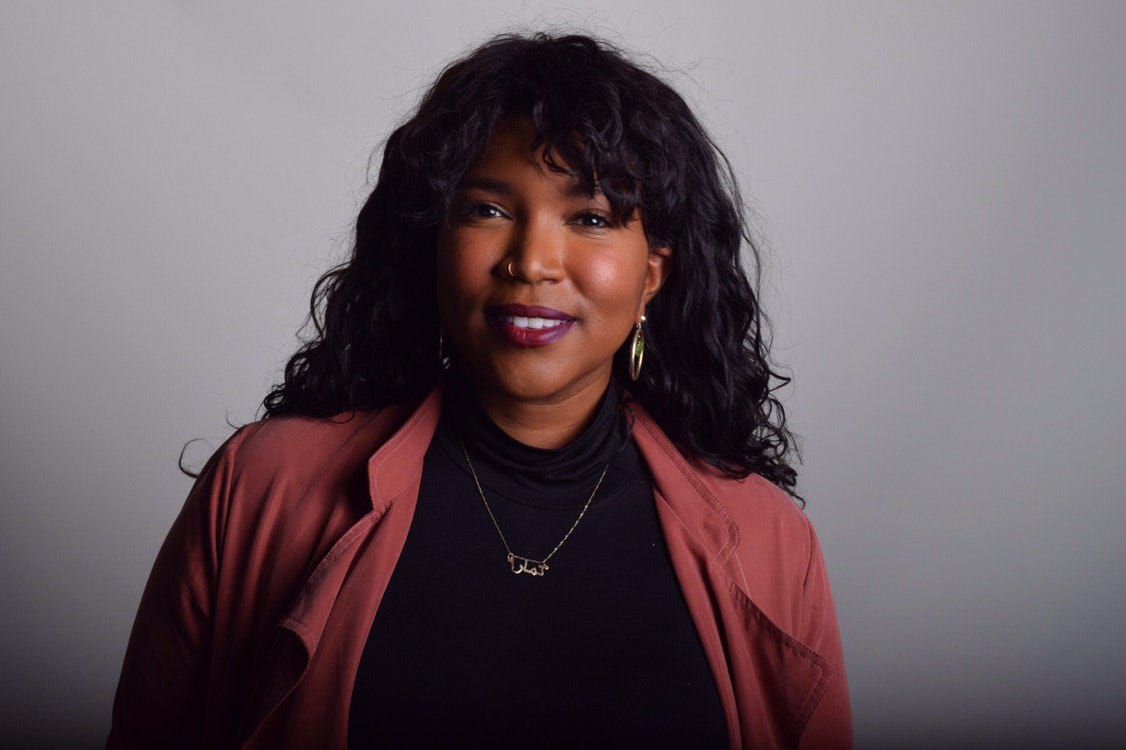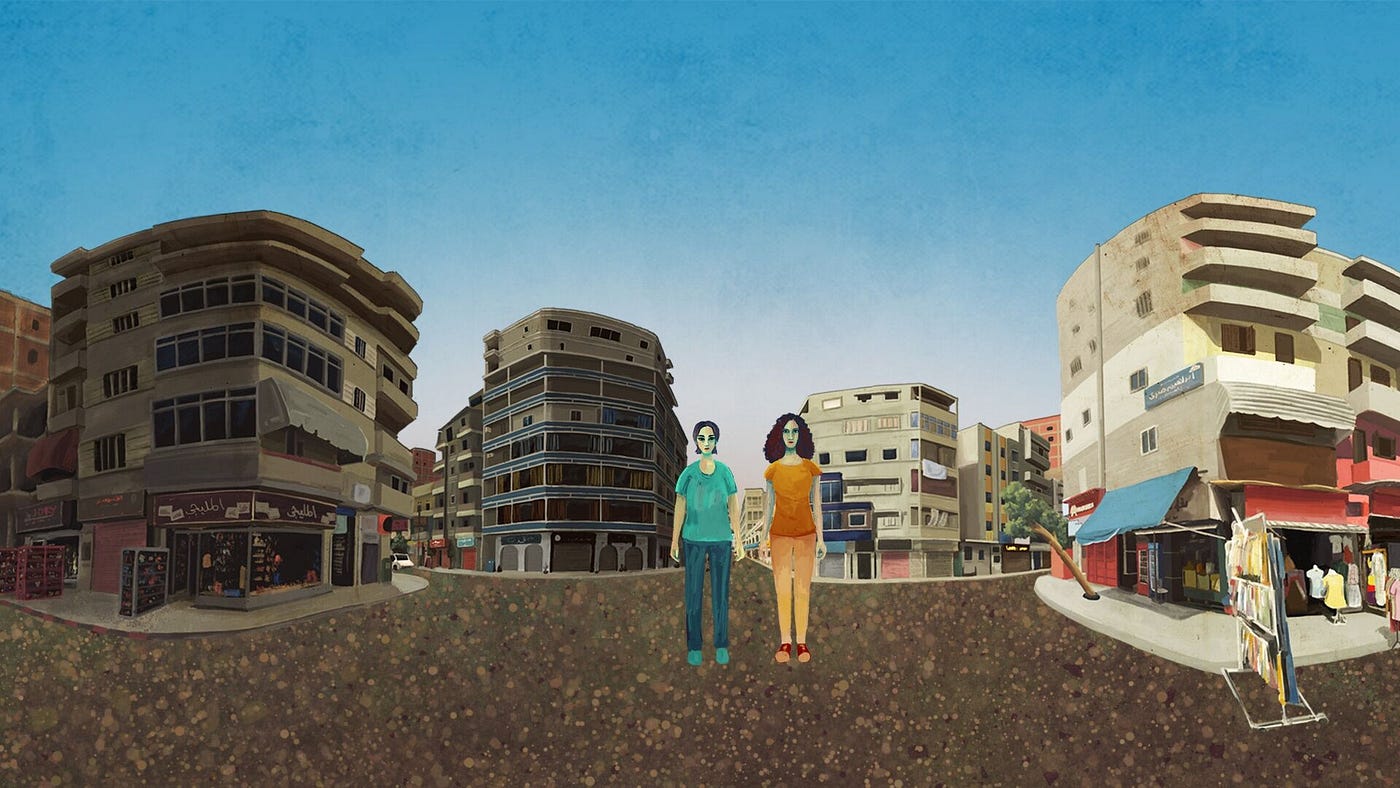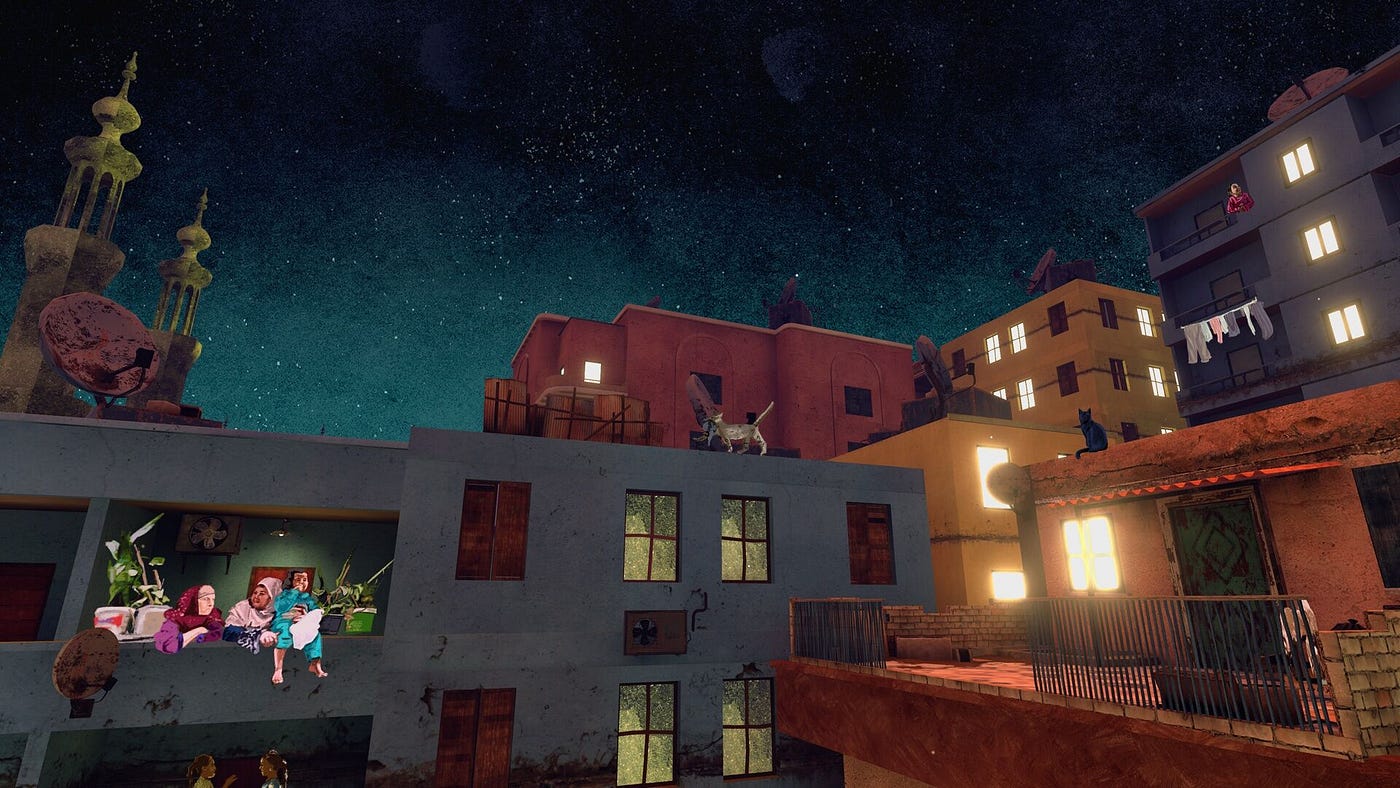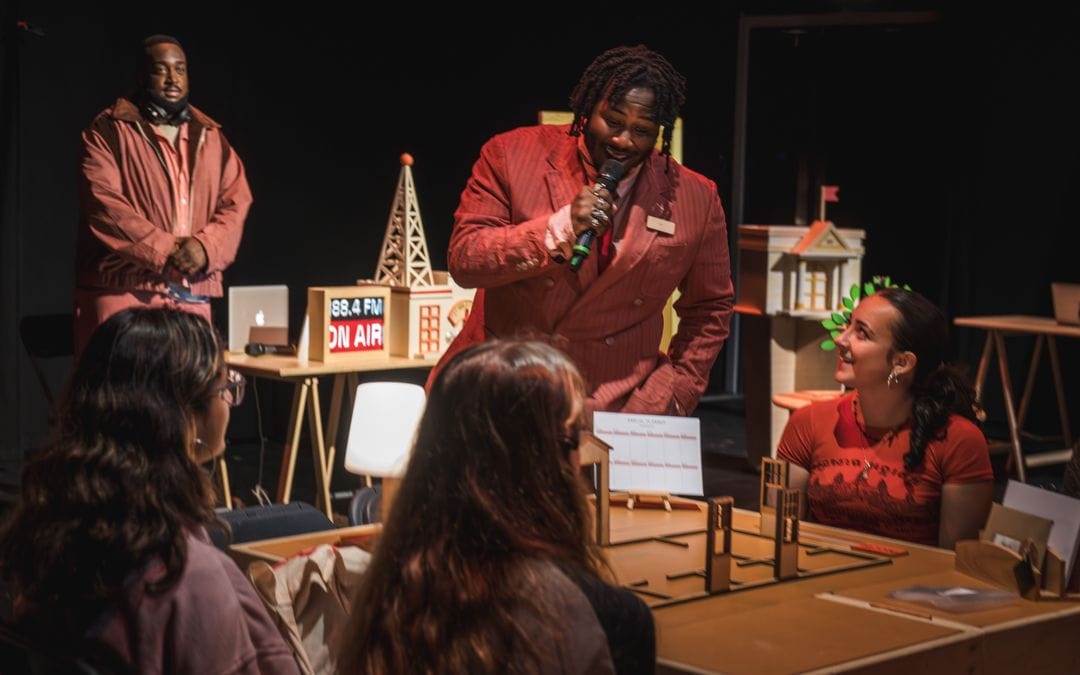
Another Dream brings a true story to life: that of an Egyptian lesbian couple escaping Cairo after one of the women finds out she’s about to enter an arranged marriage. Told through oral history recordings and animation (to protect the real life couple’s identities) in a virtual reality experience, Another Dream allows participants to follow alongside the two women as they go on their dangerous journey. Another Dream is the second installment of Queer In A Time Of Forced Migration, an animated transmedia series that follows the stories of LGBTQ refugees from Egypt, Sudan, and Saudi Arabia, and from the 2011 revolutions in the Middle East and North Africa region.
We spoke to director/creator and Blatina filmmaker Tamara Shogaolu over email about the making of Another Dream.
No Proscenium (NP): Can you tell us a little about yourself and your background?

Tamar Shogaulo (TS): As an artist from a multifaceted cultural background, having lived in many places across the globe, I am inspired by the complexities of the stories that make up our world. I explore these complexities through my work across mediums from traditional film to mixed reality in virtual and physical spaces.
I’ve had the opportunity to feature my work at film festivals, galleries, and museums worldwide, such as the Museum of Modern Art in New York and the National Gallery of Indonesia. Another Dream, my latest, virtual reality project is currently playing at the Tribeca Film Festival in the Storyscapes competition through May 4th.
NP: What, in a nutshell, is Another Dream about?
TS: The core of our animated mixed-reality piece, Another Dream, lies in the documentary audio recordings of a young Egyptian lesbian couple, whose stories I have followed since their participation in the 2011 Egyptian Revolution through their journey to seeking asylum in the Netherlands today. I wanted to share their story in a way that would best honor their experiences and voices — and share them in a way that challenges the stereotypes and even erasure of women of color, queer people, and the Muslim community that is too often presented by the mass media. Working toward these goals naturally led our team to experiment with new ways to share their story.
Animation allows us to protect the women’s identities, but it also emphasizes the personal nature of their account, as well as their unique perspective. This choice also offered our team a chance to experiment visually, with inspirations that range from Dutch and Egyptian painters, to elements of magical realism. The experiential nature of VR allows audiences to step into their memories, in order to connect with and appreciate their journey deeply. VR also afforded our team the opportunity to combine three different types of animation in a way not done before by bringing together 2D and 3D animation, with hand-drawn characters in virtual environments using tools like AnimVR.

NP: Why choose VR to tell this story? How does the use of VR bring the story to life?
TS: In many ways, I have seen how sharing people’s stories — particularly those from perspectives that are less often shared — can educate, heal, and unite us.
Get Kathryn Yu’s stories in your inbox
Join Medium for free to get updates from this writer.
SubscribeSubscribe
I believe that sharing these stories in innovative and engaging ways is all the more urgent today. Politically and in the media, we hear so much “us” versus “them,” but because of technology, our world actually now has the potential to be more “we” than ever.
Another Dream is part of an animated documentary transmedia series, Queer in a Time of Forced Migration, that brings the interviews I have recorded with LGBTQ asylum seekers over the last eight years to life through film and mixed-reality storytelling. I chose animation to protect the identities behind the voices of the people who chose to share their stories, but also to emphasize the personal nature of their accounts and to encourage new ways of witnessing their journeys.
I realized that new and immersive media tools emphasize that stories don’t just need to be heard — they need to be felt. I feel that mediums like VR have the power to make the political personal and the personal universal.
NP: What kinds of choices can the participants make during Another Dream? How do they help move the story forward?
TS: Another Dream is different than traditional VR films in the sense that it is a hybrid between an animated documentary and VR game. It is also a two-person experience meant to lead to dialogue. The infrastructure is more similar to that of a game, which means you interact with the experience and the narrative flow depends on your interaction. This also means you can truly walk around the world of the story in various environments. We really wanted to give audiences the opportunity to be immersed in the extraordinary memories and experiences of our real-life characters. The best way to find out how to move forward in the story is to come experience it at Tribeca!

NP: Who is the ideal participant for Another Dream?
TS: I think someone who is able to come in with an open mind and willing to truly listen to the story, engage and discuss. Because the VR portion of the experience is an individual journey for audiences, we designed the surrounding installation to bring the viewers together back in the real world, where they can connect and exchange around what they have just experienced in the VR. Some of Another Dream’s audiences will have experiences in common with our characters, while for others, this may be entirely new information. We hope this space for conversation will encourage all of our audience members to be more aware of the countless stories of migration that make up our world today. At the same time, this structure reflects the experience of many refugees like the women featured in our story — who often feel alone and isolated in their journeys but can find strength in supportive communities and spaces.
NP: What do you hope participants take away from the experience?
TS: Another Dream a multi-faceted, experiential journey toward togetherness, in more ways than one — in a close relationship, in the search for a home, in reuniting with loved ones, and in people who are different from one another trying to figure it out, as we all are. Ultimately, I hope that Another Dream gives audiences the experience to truly live within the stories we represent, as well as the opportunity to reflect on their own values and beliefs after experiencing another person’s intimate memories in VR.
Another Dream runs April 26 — May 4 as part of the Tribeca Film Festival’s Immersive Program. Tickets are sold out.
View all of our Tribeca Immersive 2019 coverage.
NoPro is a labor of love made possible by our generous Patreon backers. Join them today!
In addition to the No Proscenium web site, our podcast, and our newsletters, you can find NoPro on Twitter, Facebook, YouTube, Instagram, in the Facebook community Everything Immersive, and on our Slack forum.
Office facilities provided by Thymele Arts, in Los Angeles, CA.




















Discussion